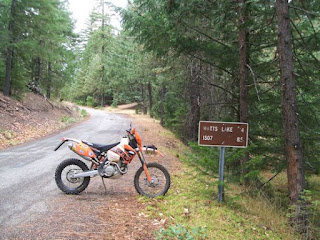The evolution of a well-trained and multi-disciplined
volunteer OHV trail workforce is both impressive and important. In the 21st Century, it has become
a critical tool and force-multiplier for land management agencies to utilize in
taking care of recreation facilities.
In many areas, highways, roads, and OHV/OSV trails
overlay historic routes used by Native Americans and early pioneers to travel
cross-country or for trading goods and services. Because of their history, these trails and
nearby areas have significant archeological value.
Kyburz Petroglyph Open to the Public
Three good examples of historic pioneer routes are the
world famous Rubicon Trail, the Mormon Emigrant Trail, and the Henness Pass
(Kyburz) Trail. Segments of said routes
provide important OHV and/or OSV opportunities.
LINK TO HENNESS PASS/KYBURZ PETROGLYPH INFO/MAP
QWR believes that trail volunteers have an increasingly
important role to play in assisting Forest Archeologists as stewards to monitor
cultural sites. Trail volunteers are
equipped to travel long distances and can access remote archeological sites
under supervision by the Forest Archeologist.
Recently, Don Amador took the California Archaeological
Site Stewardship Program (CASSP) Volunteer Workshop held on the Eldorado
National Forest. QWR believes this
training is important for engaged trail volunteers because it expands their
ability to assist the agency in managing OHV recreation as it relates to
protecting archeological resources.
The volunteer training is managed by CASSP. It received a 2014/2015 grant from the
California OHMVR Division because it is an innovative partnership program
designed to assist federal land management agencies balance the statutory
requirements to protect cultural resources with their responsibility to sustain
long-term OHV opportunities on public lands.
Through services provided by CASSP volunteers, agencies
have been able to maintain OHV opportunities that would have been restricted in
order to protect cultural resources. CASSP training workshops and CASSP
volunteers also help agencies to educate the public about environmental
responsibility, safety, and respect for private property. CASSP has become a
critical element in conserving significant historical and prehistoric cultural
resources.
According to the grant application, CASSP workshops and
volunteers enhance existing OHV opportunities in three ways: helping to keep
trails open, improving the visitor experience by providing information about
the prehistory and history, and increasing communication, education, and
understanding among different groups.
Historically, the management response has often been to
close trails or restrict OHV opportunities. By monitoring and protecting
archaeological and historical resources, CASSP helps maintain a balance between
protecting cultural sites and responsible OHV recreational use of trails and
OHV areas. Also OHV site stewards serve as role models and inform other
off-highway vehicle users to follow the designated trails, ride responsibly,
and remember to ride safely. As a result, the cultural resources, agencies, and
volunteers all benefit.
With intense wildfires burning out important trail areas
on National Forests throughout California and the West, QWR believes that
post-fire trail rehabilitation efforts lends import to the CASSP training since
wildfires often burn vegetation or trail delineators that protect archeological
and cultural sites.
QWR looks forward to incorporating the CASSP training
into its ongoing trail stewardship module.
Big thanks to all of you trail volunteers out there that
are already doing a great job! Also,
helmets off to the CA OHMVR Division for funding this grant in partnership with
Region 5, USDA Forest Service.
To find out more about the CASSP training go to:
# # #
















